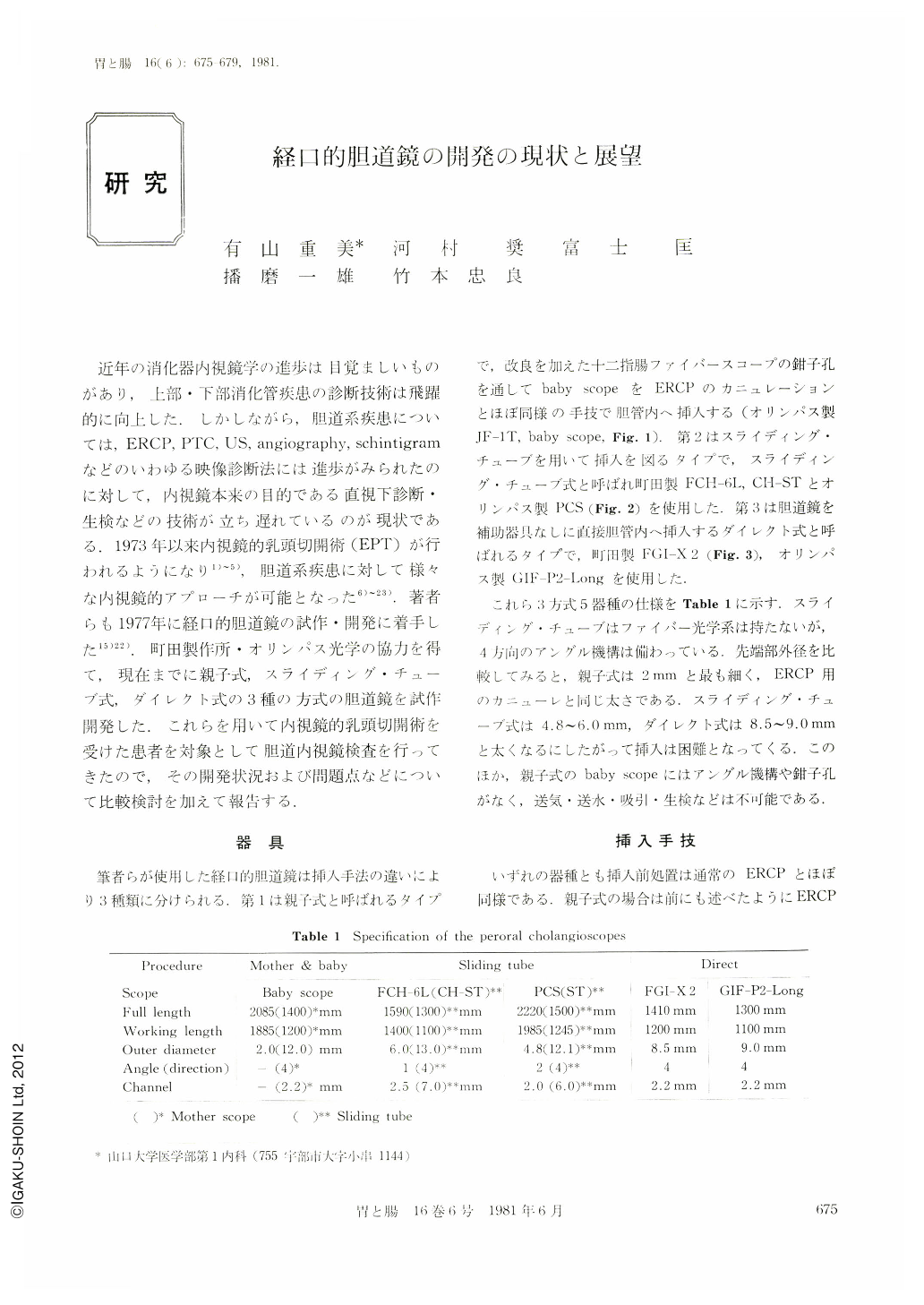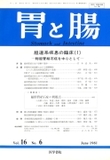Japanese
English
- 有料閲覧
- Abstract 文献概要
- 1ページ目 Look Inside
近年の消化器内視鏡学の進歩は目覚ましいものがあり,上部・下部消化管疾患の診断技術は飛躍的に向上した.しかしながら,胆道系疾患については,ERCP,PTC,US,angiography,schintigramなどのいわゆる映像診断法には進歩がみられたのに対して,内視鏡本来の目的である直視下診断・生検などの技術が立ち遅れているのが現状である.1973年以来内視鏡的乳頭切開術(EPT)が行われるようになり1)~5),胆道系疾患に対して様々な内視鏡的アプローチが可能となった6)~23).著者らも1977年に経口的胆道鏡の試作・開発に着手した15)22).町田製作所・オリンパス光学の協力を得て,現在までに親子式,スライディング・チューブ式,ダイレクト式の3種の方式の胆道鏡を試作開発した.これらを用いて内視鏡的乳頭切開術を受けた患者を対象として胆道内視鏡検査を行ってきたので,その開発状況および問題点などについて比較検討を加えて報告する.
Endoscopic papillotomy (EPT) is one of the great advances in recent years in the fields of endoscopy. We have attempted the examination of the bile duct by inserting the cholangioscope through the incized duodenal papilla into the common bile duct in the papillotomized patients.
Three types of peroral cholangioscopes have been made by courtesy of Machida and Olympus Co. Ltd., and three kinds of procedures have been developed, which are mother and baby, sliding tube, and direct. These procedures have been performed in 55 patients, and succeeded in inserting the scopes into the common bile duct in 25 patients (45.5%).
We compared each of the procedure and the instruments with other, and investigated clinically.
As the results, it was considered that several types of peroral cholangioscopes should be prepared for use according to the case.

Copyright © 1981, Igaku-Shoin Ltd. All rights reserved.


